Complete Solutions to PRACTIVE EXERCISE of chapter GAUSS LAW AND ELECTRIC POTENTIAL THEORY of Class 12 book with complete answers and questions
| Class 12 | PHYSICS |
| Chapter | GAUSS LAW AND ELECTRIC POTENTIAL THEORY |
| BITSAT GUIDE | PRACTIVE EXERCISE |
| Number Of Questions | 41 |
| Academic Year | 2023-24 |
A surface` s =10hatj` is kept in an electric field. `E = 2hati+4hatj+7hatk`. How must electric flux will come out through the surface ?
01:42View SolutionElectric field at point P is gives by `E=rE_(0)`. The total flux through the given cylinder of radius R and height h is
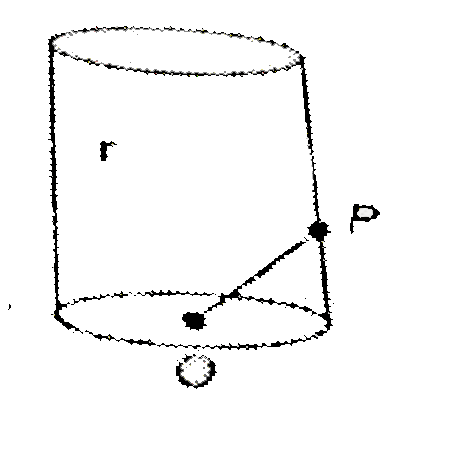 02:26View Solution
02:26View SolutionA point charge Q is placed at the centre of a hemisphere. Find the electric flux passing through flat surface of hemisphere.
02:46View SolutionA point charge Q is placed at the centre of a hemisphere. Find the ratio of electric flux passing through curved andplane surface of the hemisphere.
02:17View SolutionIf a point charge q is placed at one corner of a cube, what is the flux linked with the cube?
02:02View SolutionAn electric dipole is placed at the centre of a sphere. Find the electric flux passing through the sphere.
01:27View SolutionA point charge q=`2xx10^(-7)`C is placed at the centre of a spherical cavity of radius 3 cm in a metal place. A and B are at distances 1.5 cm and 4.5 cm respectively from the centre of cavity.
The electric field intensities at a and b are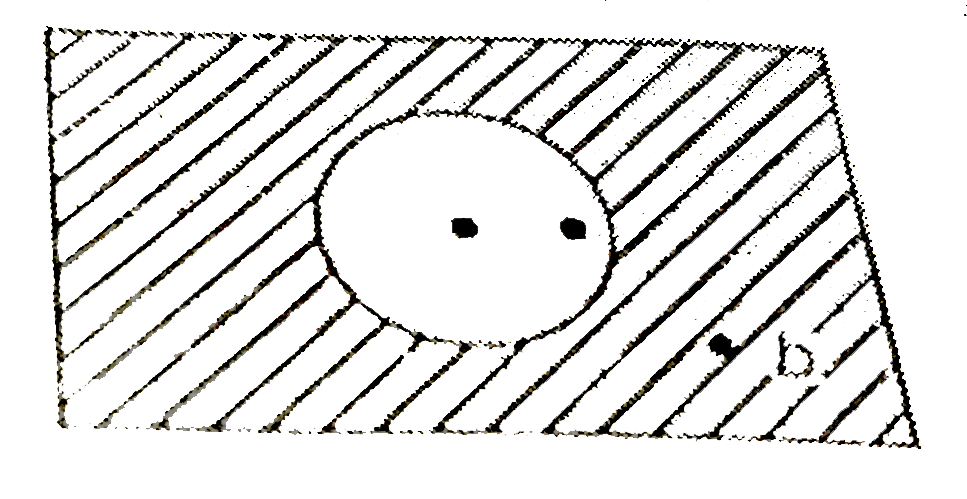 06:42View Solution
06:42View SolutionIn the given figure, two point chrges `q_(1) " and " q_(2)` are placed at distances a and b from centre of a metallic sphere having charge Q.Find electric felds due to the metallic sphere at the point P.
 02:15View Solution
02:15View SolutionFind the minimum surface denstily of charge on the plate, so that a body of mass 2 `kg//m^(2)` may just be lifted.
03:19View SolutionFind the surface density of electric charge at a place on the earth's surface, where the rate of fall of potential is 2.5 V.
01:24View SolutionFour point charges `q_(1),q_(2),q_(3)" and " q_(4)` are placed at the corners of the squares of side a,as shown in figure.Calculate the potential at the centre of the square.
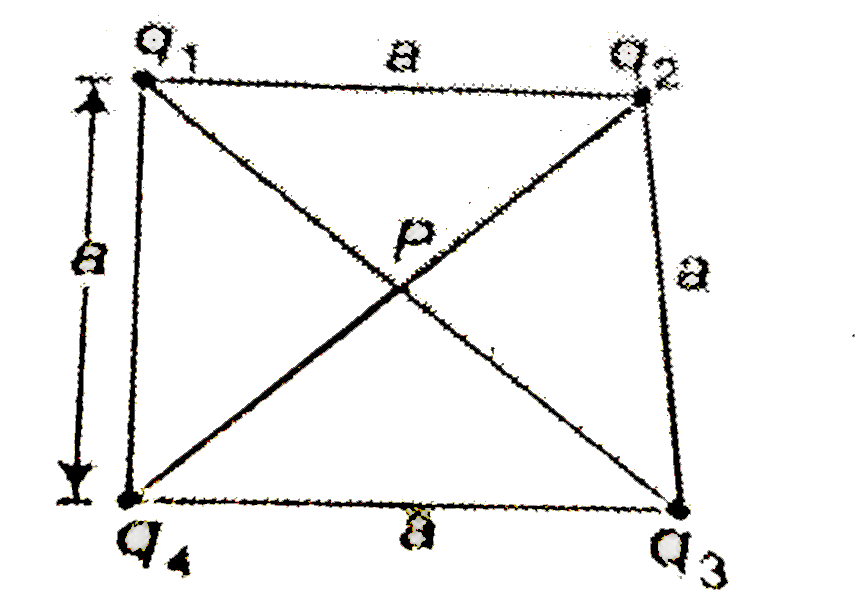
(Given, `q_(1)=1xx10^(-8)C,q_(2)= -2xx10^(-8)C,q_(3)=3xx10^(-8)C,q_(4)=2xx10^(-8)C" and " a=1m`)02:16View SolutionOver a thin ring of radius R a charge q is distributed none-uniformly. Calculate the work done of the force field in displacing a point charge q' from centre of the ring to infinity.
01:46View SolutionTwo drop of water each with a charge of `3xx10^(-9)C`having surface potential 500 V form a single drop.What is the surface potential of the new drop?
02:04View SolutionCalculate the earth's potential. Assume earth has a surface charge density of 1` "ectron/metre"^(2)`.(Given,the electronic charge = `-1.6xx10^(-19)C," earth's radius "=6.4 xx10^(6)m,e_(0) = 8.9xx10^(-12)c^(2)//Nm^(2)`)
02:10View SolutionAn electron is released from rest at one point in uniform field and moves a distance of 10c cm in `10^(-7)` s. What is the voltage between the points?
02:11View SolutionIn the figure, the charge appears on the sphere is
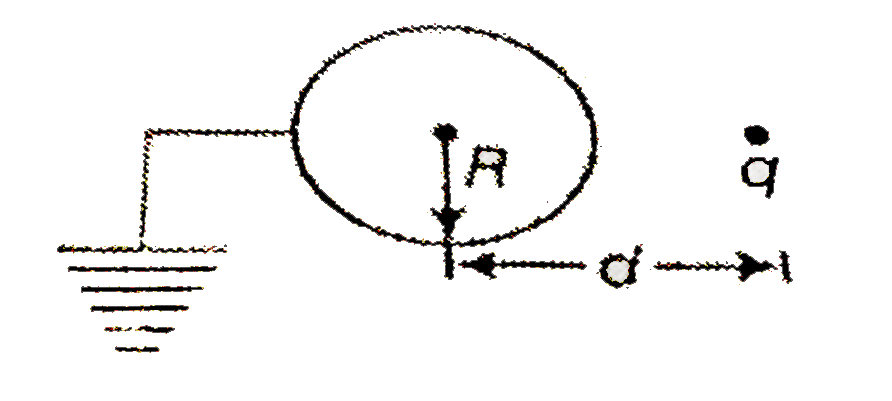 01:22View Solution
01:22View SolutionAt the eight corners of a cube of side 10 cm, equal charge each of value 10 C are placed. Calculate the potebtial at the centre of the cube.
01:39View SolutionCalculate the work required to bring a unit positive charge from infinity to a mid-point between two charges `20muC" and " 10muC` separated by a distance of 50 m.
04:03View SolutionTwo charge _q and -3q are placed at a distance of 1 m apart.Find out the points on the line joing two charges, where electric potential is zero.
01:40View SolutionTwo point are at distance `r_(1)" and " r_(2)(r_(1)ltr_(2))`from a long string having charge per unit length `sigma`. The potential difference between the points is proportional to
01:29View SolutionA semicirxular wire of radius a having `lambda`as charge per unit length Is shown in the figure. Find the electric potential at the centre of the semicircular wire.
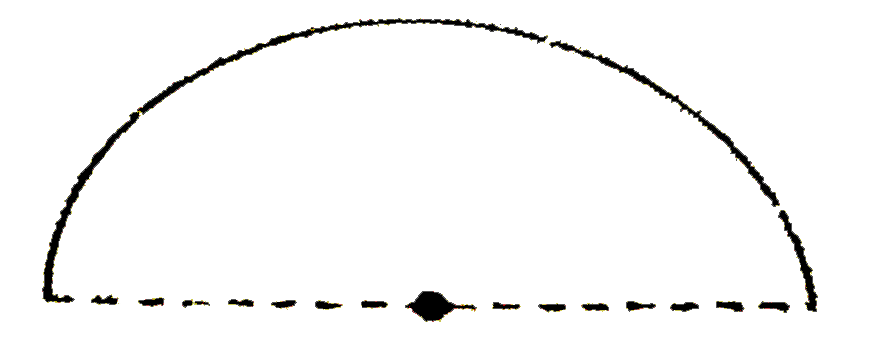 01:10View Solution
01:10View SolutionIf a charge particle starts from rest from one conductor and reaches the other conductor with a velocity of `10^(9)cm//s`, then calculate the potential differnce between the two conductor. The mass of the charge particle is `9xx10^(-28)` g and charge is `4.8xx10^(-10)`asu.
01:22View SolutionA charge Q is uniformly distributed over the surface of two conducting concentric spheres of radii R and r (Rgtr). Then, potential at common centre of these spheres is
02:26View SolutionIf a chargedd particle states from rest from one conductor and reaches the other condutor with a velocity `10^(9)` cm/s, if the potential difference between the two conductors is 0.94 stat volt, then calcualte the charge of the charged particle.
(Given, mass of charged particle=`9xx10^(-28)` g)03:04View SolutionCalculate the potential of the big drop, if eight charged of `10^(-10)` C merge into a single drop.
02:00View SolutionA charge `q=2muC` is moved by same external force from infinity to a point where electric potential is `10^(4)` V .Calculate the work done by external force.
01:58View SolutionFind the electric protential energy of electron-proton system of hydrogen atom.(Given, the radius of electron orbit =0.53 A, electronic charge = `1.6 xx 10 ^(-19C`)
03:55View SolutionThree charges Q, 2Q, 8Q are to be placed on a line whose length is R metre. Lacate the positive where these charges should be placed such that the potential energy of the system is minimum.
05:40View SolutionA particle of mass `0.002 kg` and a charge `1muC` is held at rest on a frictionless horizontal surface at a distance of 1m from a fixed charge of 1mC. If the particle is released, it will be repelled. The speed of the particle when it is at a distance of 10m from the fixed charge is -
04:11View SolutionAt the corners of an equilateral tringle of side a =1 m, three point charge are placed (each of 0.1 C). If this system is supplied energy at the rate of 1 kW, then calculate the time required to move one of charges to the mid-point of the line joining the other two.
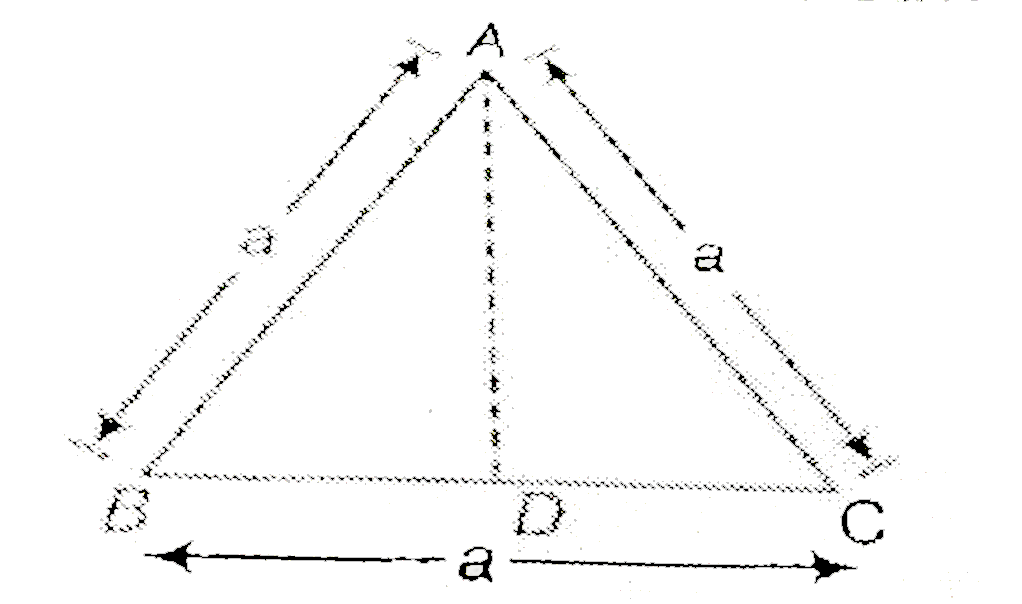 06:46View Solution
06:46View SolutionIf Q charge is given to a sphere of radius R, the energy of the system is
06:16View SolutionTwo balls with charges `5muC" and "10muC` are at a distance between them to 0.5 m, the amount of work to be performed is
02:36View SolutionThree small conducting spheres each of radius a and charge q is placed at the corners of an equilateral triangle of side lenth /. The side lenth / is considerably larger than dimensions of the spheres. Find the electrical potential energy of system.
 03:07View Solution
03:07View SolutionDue to a charge inside a cube the electric field is `E_(x)=600 x^(1//2), E_(y)=0, E_(z)=0`. The charge inside the cube is (approximately):
 03:20View Solution
03:20View SolutionWhat is the wlwctric field intensity at point at a distance 20 cm on line making an angle of `45^(@)`with the axis of the dipole of moment 10C-m?
02:21View SolutionWhat is the electric potential at a point distance 100 cm from the centre of an electric dipole of moment `2xx10^(-4)C-m` on a line laking an angle of `60^(@)`?
01:26View SolutionTwo point charge `q_(1) = -10xx10^(-6) C " and "q_(2)=15xx10^(-6)` are 40 cm apart as shown in figure. Find the potential difference between the point P and Q.
 03:35View Solution
03:35View SolutionAn electric dipole made up of a positive and negative charge, each of 1 mC and placed at a distance 2 cm apart . If the dipole is placed in an electric field of `10^(5)`N/C, then calculate the minimum torque which the field can exert can exert on the dipole , if it is turn from a positive `theta=0^(@)"to "theta=180^(@)`.
02:13View SolutionWhat work must be done to rotate an electricdipole thurgh an angle `theta` with the electric field, if an electric dipole of moment P is placed in an uniform electric field E with P parallel to E ?
01:53View Solution(Figure 3.118) shows two dipole moments parallel to each other and placed at a distance x apart. What is the magnitude of force of interaction ? What is the nature of force, attractive or repulsive ?
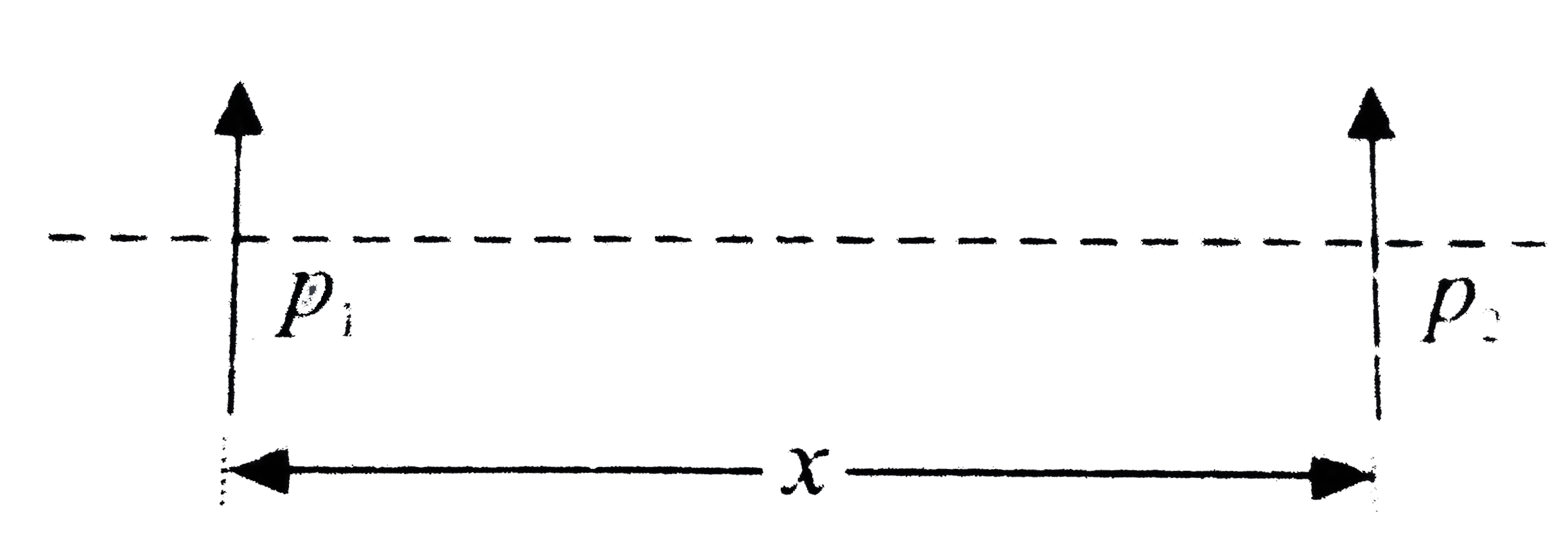 .03:59View Solution
.03:59View SolutionElectric dipole mament of combination shown in the figure is
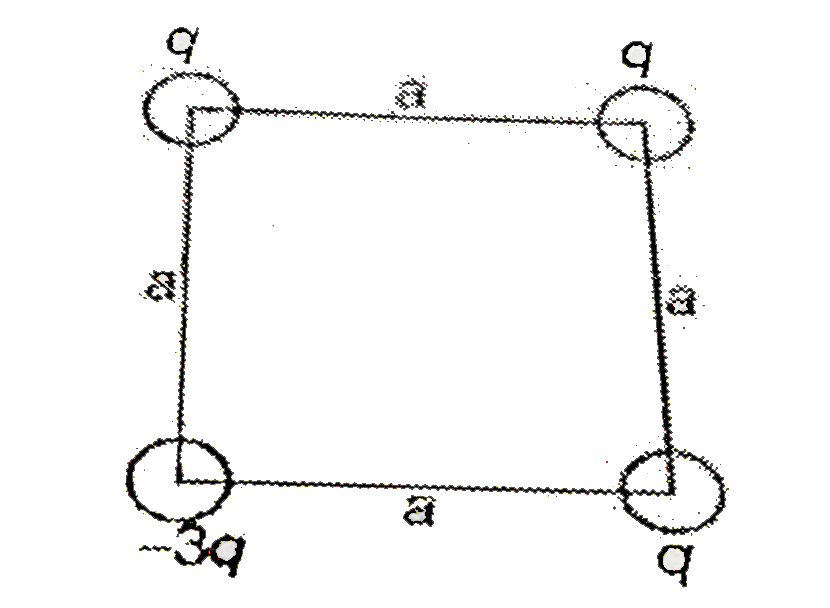 02:30View Solution
02:30View Solution
PRACTIVE EXERCISE questions and complete solutions for chapter GAUSS LAW AND ELECTRIC POTENTIAL THEORY of BITSAT GUIDE of Class 12
